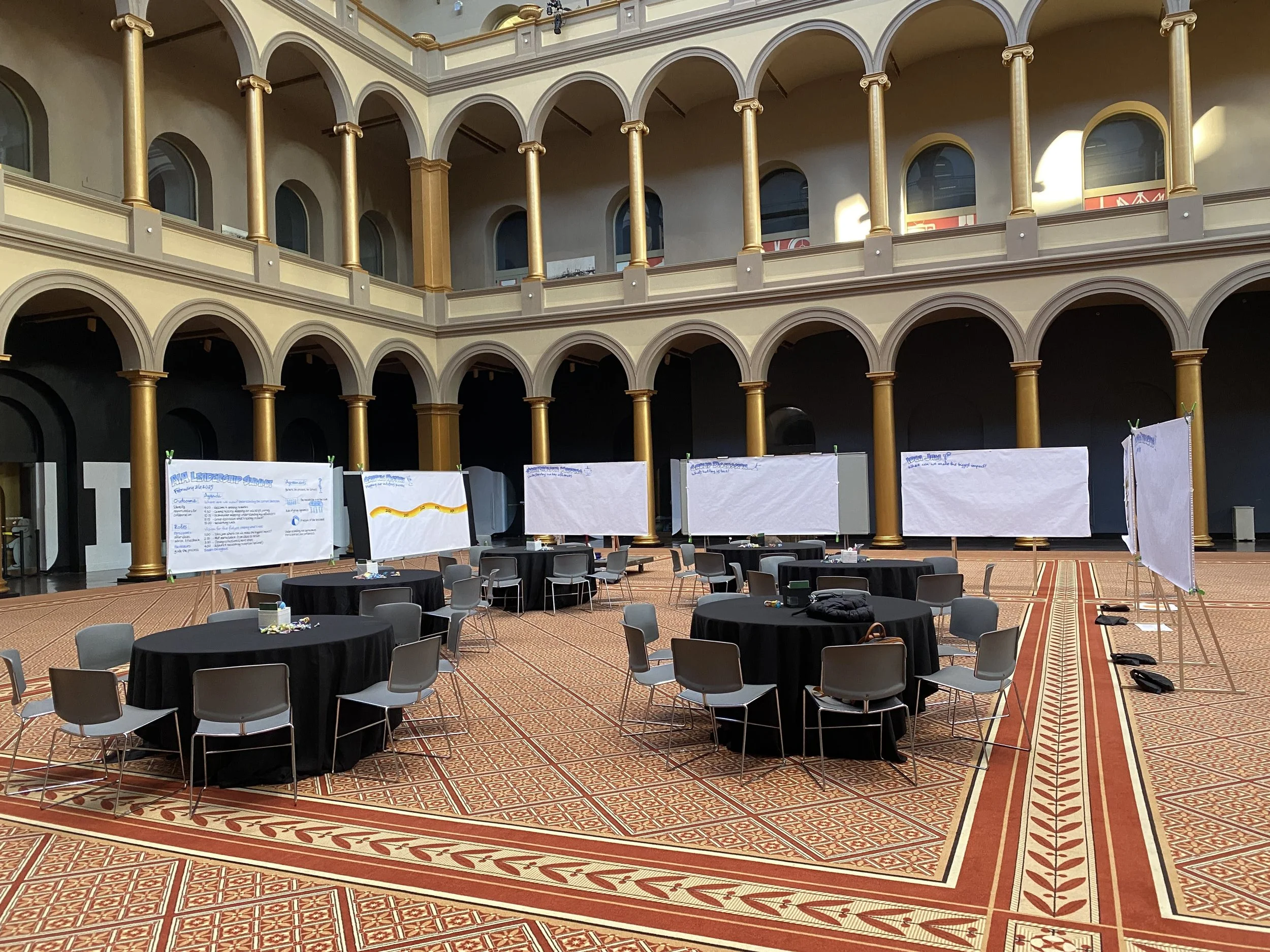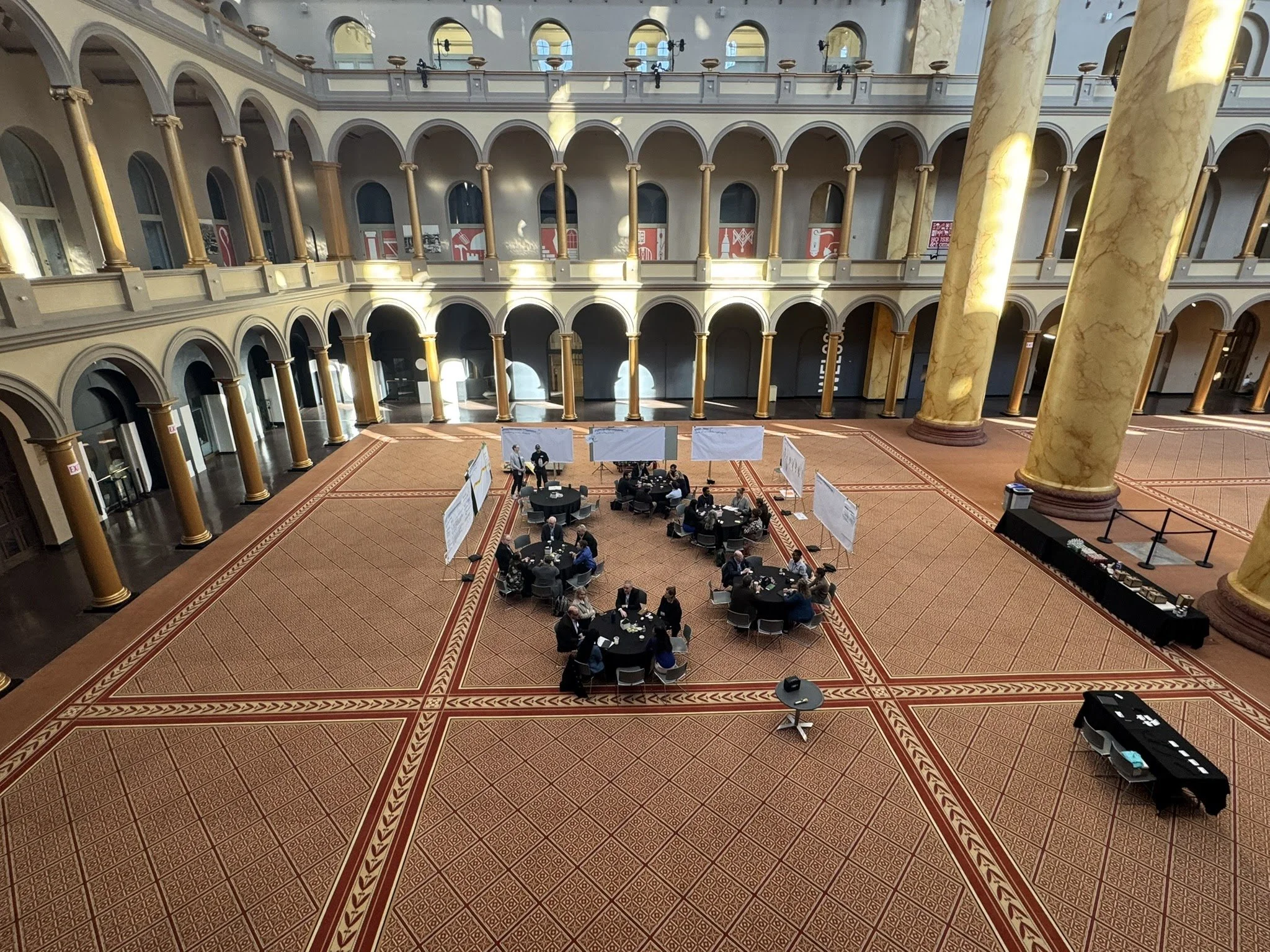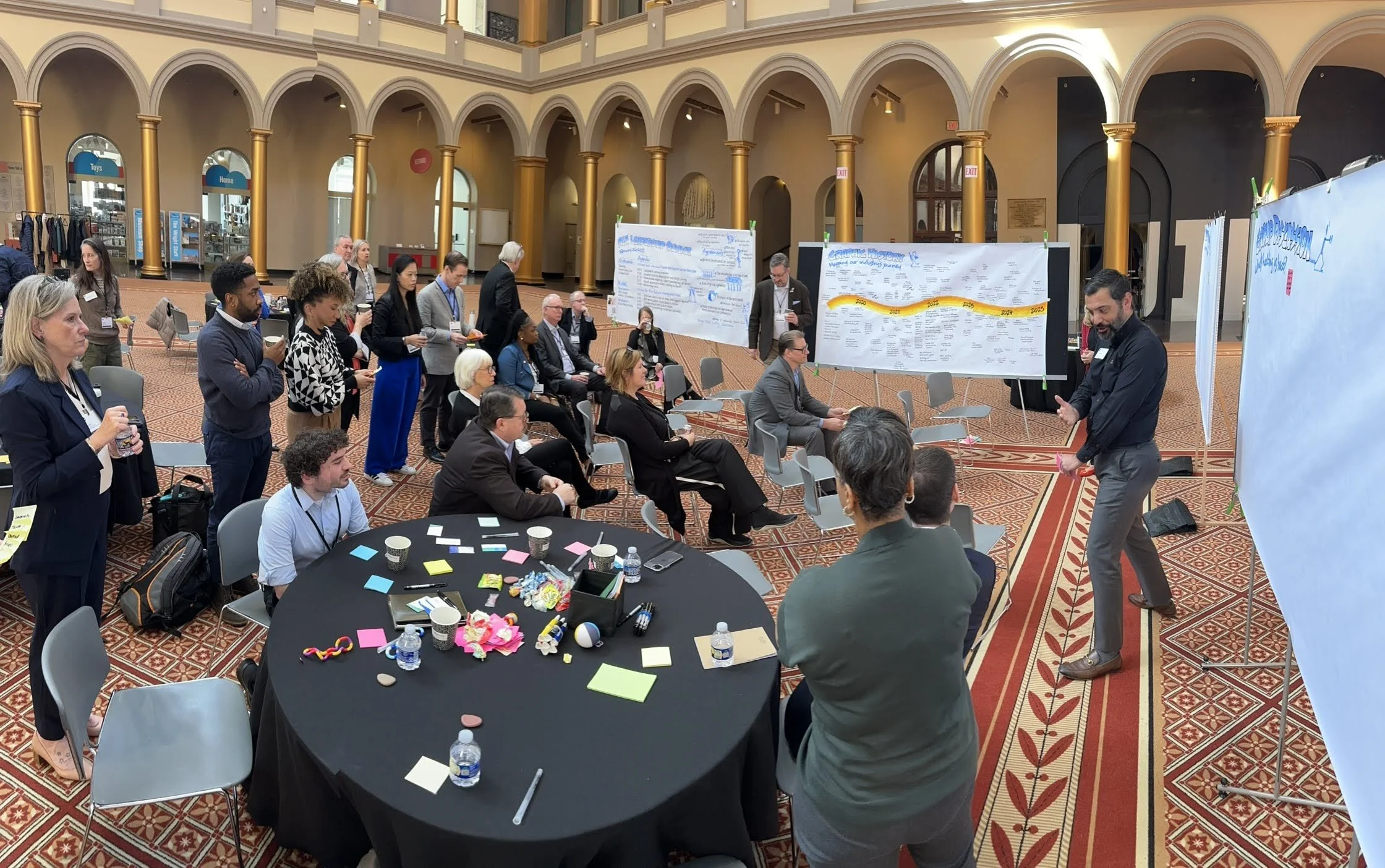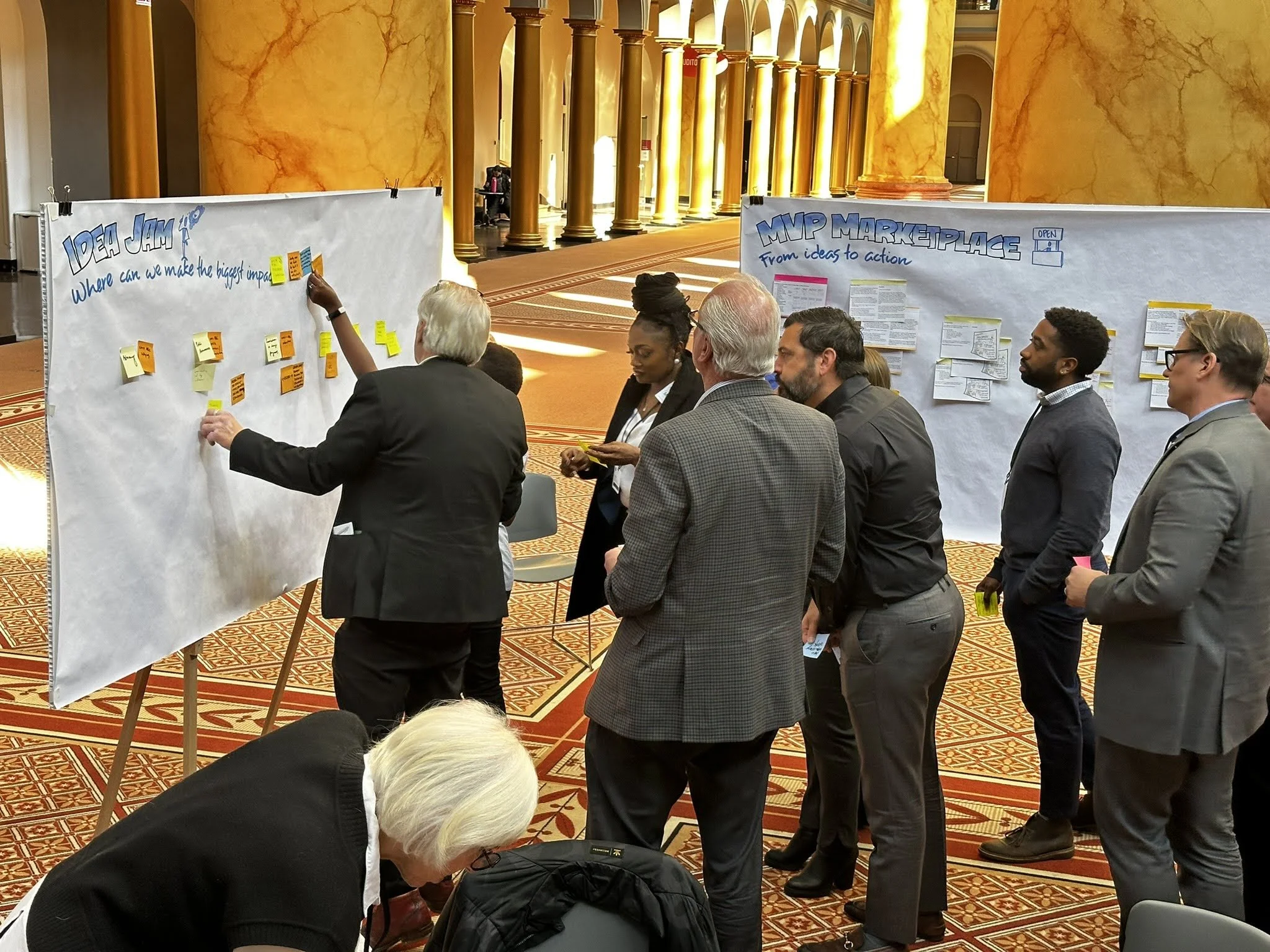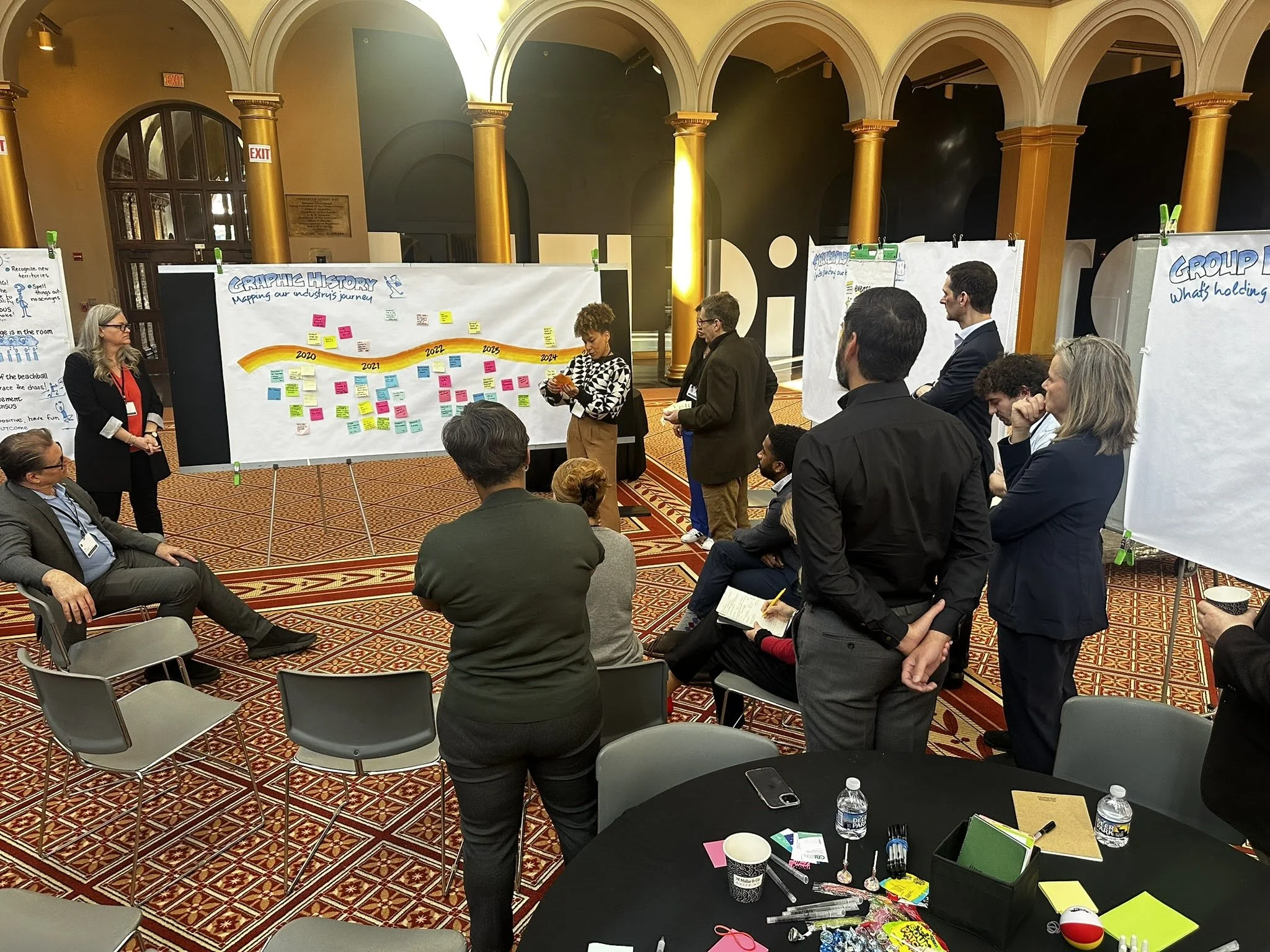The Secret to Great Meetings: The Room
Photo by Thrine Kane during the American Institute of Architects’ Leadership Summit held at the National Building Museum
Have you ever walked into a room and felt instantly comfortable? Or maybe the opposite, where you couldn’t settle in or focus? The room matters more than you might think, especially when you’re hosting an event. The environment you create can shape how people feel, think, and engage. Whether your event is a one-day meeting or a multi-day workshop, designing the room with care can elevate the entire experience.
Think of “The Room” as your secret agenda. Every detail invites your participants into the experience and helps them connect, collaborate, and focus. Here's how to create a room that works magic.
Environment = Experience
The environment you create is the foundation of a great event. If the space feels welcoming and intentional, your participants will have a better experience. Consider these elements carefully:
Space: Is there enough room for everyone to move comfortably? Can people spread out for group work or conversations? Make sure it’s not too cramped or too cavernous. Aim for a balance of cozy and spacious.
Light: Lighting can influence both energy and mood. Natural daylight is ideal, but if that’s not possible, think warm and inviting, not glaringly bright or dim and dreary.
Views: If the room offers scenic views, take advantage of them (just be mindful they’re not so distracting). Even a well-placed plant or colorful poster can bring life to a lackluster space.
Sound: Check for anything that might disrupt your event, like loud HVAC systems or street noise. Quiet rooms for reflective work are important, but upbeat sessions might benefit from a little background music.
Music: Speaking of music, consider playing upbeat tunes as participants arrive or between sessions. It adds energy and helps people feel more relaxed.
Temperature: Too hot, and people lose focus. Too cold, and they’ll cross their arms in discomfort. Test the temperature beforehand to find a happy medium.
Food: It’s hard to concentrate on an empty stomach. Snacks and meal options should be thoughtful, providing energy without creating a sugar crash. Bonus points for offering something a little special, like local pastries or fresh fruit.
Decorations and Gifts: A touch of decoration can go a long way. Bright tablecloths, fresh flowers, or even colorful sticky notes make the space feel more lively. Small gifts, like notebooks or pens, show your participants you value their time.
A New Day, A New Perspective
For multiday events, keeping engagement high can be tricky. One simple way to refresh the energy and spark creativity is to invite participants to change seats each day. It might seem like a small thing, but “gaining a new perspective” by sitting in a different spot can give people new energy and help them connect with others they might not have met yet.
You could make it part of the morning routine. Start the day by saying something like, “Today, find a new chair, a new table, or even a new view and see how it changes your perspective.” It’s a fun way to encourage openness and curiosity.
Set the Tone with a Slideshow
First impressions matter. When participants arrive, you want them to feel curious and excited about the day ahead. A simple, looping slideshow is a great way to set the mood. Fill it with:
Imagery: Photos of past events, fun graphics, or beautiful pictures that match the event’s theme. Visuals should feel inviting, not overwhelming.
Fun Facts: Share surprising stats, quirky trivia, or thought-provoking quotes related to the event topic. For example, if it’s a brainstorming session, toss in a statistic about how many ideas are born from group collaboration.
Warm Messages: Include welcoming phrases like “We’re so glad you’re here!” or “Today is going to be a great day!” Use it as an opportunity to show participants they’re part of something meaningful.
Keep the slideshow lighthearted and engaging. It’s not the main event, but it’s a great way to set the tone as people trickle in, sip coffee, and settle into the space.
Photo by Jill Schreifer during the American Institute of Architects’ Leadership Summit held at the National Building Museum
The Room is Magic
The room you create isn’t just a backdrop; it’s part of the event itself. When the details are carefully considered, people feel informed, inspired, and ready to contribute. A well-designed room signals to participants that their time and energy matter.
By thinking about the environment, encouraging fresh perspectives, and creating fun first impressions, you set the stage for something bigger than just another meeting. You build a space where great ideas, connections, and experiences can flourish.

